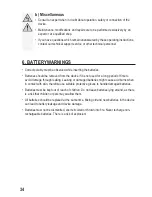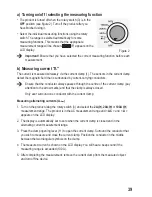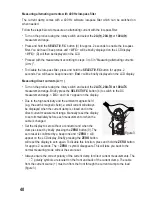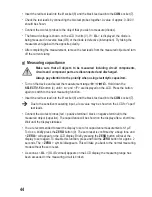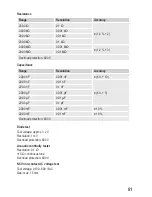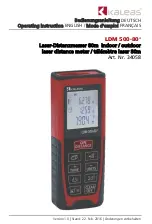
45
• After completing the measurement, remove the test leads from the measured object and turn
off the current clamp.
h) Non-contact AC voltage testing "NCV"
The voltage detector is only designed for quick tests and by no means replaces
a contact voltage test. This method is not to be used for checking that no
voltage is present before carrying out work.
The NCV function (non-contact voltage detection) enables the contactless detection of an AC
voltage on conductors. The NCV sensor is located on the top of the clamp.
Always test the NCV function first on a known AC voltage source to avoid incorrect
measurements. There is a risk of an electric shock in the event of incorrect measurements.
Proceed as follows:
• Turn the rotary switch (3) to the
NCV
position.
• Place the NCV sensor as close as possible to a conductor. The gap must not be larger than
15 mm.
- <
EF
> is displayed on the LCD for an AC voltage ≤100 V/AC.
-
For an AC voltage >100 V/AC, the signal strength is shown via 4 dash symbols ("――――").
You will also hear beep tones and the NCV signal display (2) flickers.
Due to the highly sensitive NCV sensor, the NCV signal display may also light up for
static charges. This is normal and is not a malfunction.
10. ADDITIONAL FUNCTIONS
a) Automatic shut-off
• The device turns off automatically after 15 minutes if no button was pressed or the rotary
switch was not turned. This function protects the batteries and prolongs the battery life.
You will hear 5 beeps 1 minute before the current clamp turns itself off. The device will
give off a long beep just before it turns itself off.




